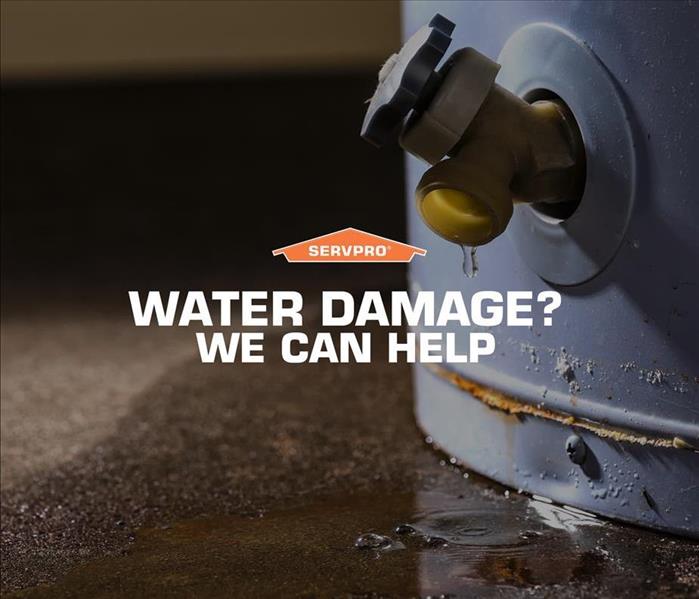What would you do? Knowledge is power!
5/29/2020 (Permalink)
 Water leaks in your home, whether from an appliance such as a leaky water heater or from a burst pipe, need to be addressed immediately.
Water leaks in your home, whether from an appliance such as a leaky water heater or from a burst pipe, need to be addressed immediately.
Close your eyes and imagine any one of the following scenarios:
- You were trying to turn off the water but your outdoor spigot handle breaks off. How do you turn off the water now?
- You turned on your dishwasher an hour ago. You've just returned to your kitchen -- and the floor is all wet. Seems a dishwasher supply hose burst. What's the first thing you do?
- You return home only to find that an overhead water pipe in your basement has burst, leaving a wet mess to be cleaned up. Where do you start?
- You've always taken for granted how a toilet flushes when you push the lever. Until one day you push to flush and the pipe collar behind the toilet cracks. Water is spraying everywhere. What now?
These are examples of real customer issues that SERVPRO of Glenview has responded to over the past few years. The different ways and the amount of water damage that can occur is mind-boggling.
When you are present at the moment it happens, what do you do first? If your first instinct is to stop the water, you're correct. But if the spigot handle is broken or the hose or pipe have burst, how do you stop the water?
You have to turn off the water source. You do this by either turning off the nearest water shut-off valve or by turning off the main shut-off valve, the valve that controls the water supply to your entire residence. However, you cannot turn off the valves if you don't know where they are!
Unfortunately, very few homeowners take the time to learn where the emergency shut-off valves are located in their home. Knowing where the valves are located and how to shut them off can save you precious time -- and untold damage -- at crucial moments during a water loss emergency.
Take the time to educate yourself where these shut-off valves are located. Most homes today have shut off valves in multiple locations, in addition to the main shut-off valve. Check beneath your sinks, behind your toilets, behind the washing machine, and even near your fridge. Chances are, you'll see a shut-off valve there!
Remember, lefty-loosey, righty-tighty! Educate yourself - and others in your household - on how to turn off the water in case of emergency! The sooner you stop the flow, the less chance there is for more severe water damage!
After you turn off the water at the nearest shut-off valve, then you can address the next issue: cleaning up the wet mess! If it's a small mess, certainly it can be cleaned up easily with towels or a wet-vac. But you might need to call in the pros for larger messes - call SERVPRO! And to take care of any burst pipes or broken faucets, be sure to contact your plumber to take care of that.
Being home when an accident happens is one thing, but what happens when you're not there to see it - or to react immediately? One way of preventing unexpected water damage from occurring when you will be away from home for longer periods of time, like a vacation, is to turn off the main shut-off before you leave.
No matter where you are when water damage occurs in your home, minimizing the damage is first priority - for you and for us. Should disaster strike, don't hesitate to call the professionals. Call SERVPRO of Glenview at 847-832-9300.





 24/7 Emergency Service
24/7 Emergency Service